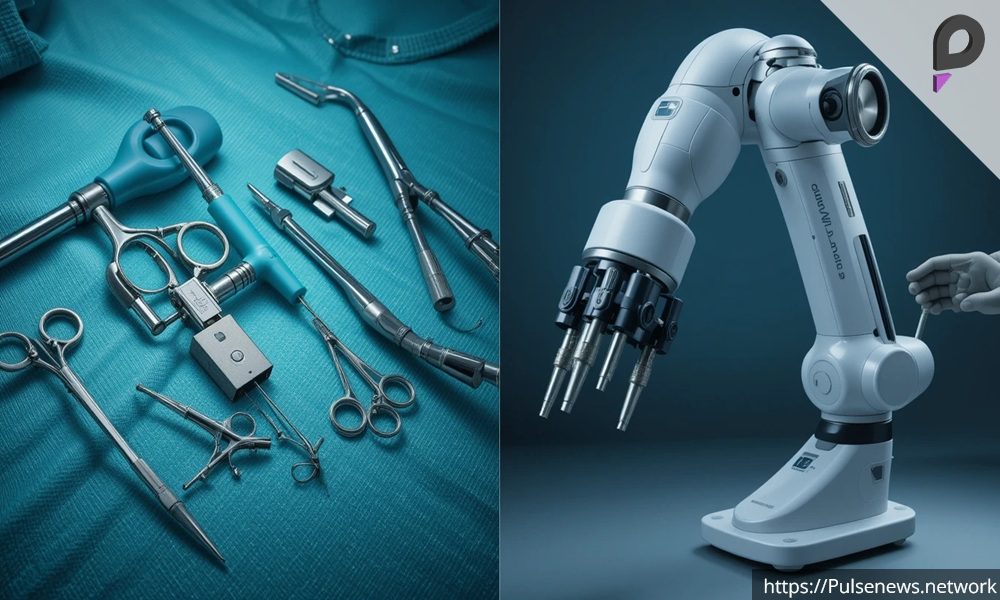Surgery, one of the oldest and most transformative medical practices, has undergone remarkable evolution throughout history. From ancient civilizations to modern breakthroughs, surgery’s journey is filled with milestones, challenges, and pioneering figures who shaped the field as we know it today.
The Evolution of Surgery
Surgery has been integral to medical advancements across history. From ancient techniques using rudimentary tools to modern-day robotic surgeries, the field has advanced through the contributions of pioneering scientists and surgeons. Early surgical practices were fraught with limitations, including lack of anesthesia and rudimentary knowledge of anatomy. Over time, advancements in medical science, technology, and surgical procedures have transformed the field, improving patient outcomes and the quality of life.
Ancient Surgical Practices The Dawn of Surgery
The earliest recorded surgeries date back to prehistoric times. Archaeological findings suggest that early humans performed trepanation (the drilling of holes into the skull) as early as 6500 BCE. This procedure was often performed to treat head injuries, brain conditions, or as a ritualistic practice. Some evidence suggests that these early surgeries had a surprisingly high survival rate, indicating a rudimentary understanding of surgical care.
Ancient Egyptian Surgery Early Innovations
The Egyptians were pioneers in surgical practices, as evidenced by the Edwin Smith Papyrus, a medical text dating back to 1600 BCE. It contains descriptions of surgical procedures for treating wounds, fractures, and trauma. Ancient Egyptian physicians were skilled in suturing wounds and performing amputations. They also made use of basic prosthetics, and mummified remains have been found with wooden toes and hands, suggesting early attempts at reconstructive history of surgery.
Indian Contributions Sushruta’s Legacy
Sushruta, an Indian surgeon from around 600 BCE, is often called the Father of Surgery. His work, the Sushruta Samhita, described over 300 surgical procedures and 120 surgical instruments, and included techniques like rhinoplasty (reconstructive surgery for the nose) and cataract surgery. Sushruta’s emphasis on sanitation and sterilization practices was ahead of its time, highlighting the importance of cleanliness in preventing infections, a practice that became fundamental in modern surgery.
Greek and Roman Medicine: Surgical Refinements
In Greece, Hippocrates (460-370 BCE) advocated for cleanliness and ethical medical practices, laying the foundations of modern medical ethics. His observations on wound treatment, dislocations, and fractures improved the practice of surgery. The Romans took these practices a step further, particularly military surgeons, who became skilled in battlefield injuries, amputations, and wound care. Galen, a Greek physician in the Roman Empire, became known for his anatomical studies, which were used for centuries, despite some inaccuracies in his observations.
Medieval Surgery and Its Challenges
Medieval surgery was often performed by barbers or craftsmen rather than trained physicians. These barber-surgeons conducted minor surgeries like bloodletting, tooth extractions, and wound care. However, without a solid understanding of anatomy or infection control, surgeries were painful, risky, and frequently ineffective.
Islamic Golden Age Preservation and Advancement
During the Islamic Golden Age (8th–14th centuries), many ancient medical texts were preserved, translated, and expanded upon. Al-Zahrawi (Abulcasis), often referred to as the Father of Modern Surgery, made substantial contributions to surgical techniques. His work, Kitab al-Tasrif, introduced over 200 surgical instruments and emphasized cleanliness, suturing techniques, and cauterization. Al-Zahrawi’s influence spread across Europe, where his writings were widely studied and followed for centuries.
The Renaissance The Birth of Modern Surgery
The Renaissance brought a renewed interest in human anatomy and a focus on empirical observation. Surgeons began to reject Galen’s inaccuracies and embraced a more scientific approach to surgery.
Andreas Vesalius The Anatomical Revolution
Andreas Vesalius (1514–1564) is often credited with revolutionizing our understanding of human anatomy. His detailed dissections of the human body led to the publication of De humani corporis fabrica, a book that corrected many of Galen’s anatomical errors. Vesalius’s work gave surgeons the necessary tools to understand the human body in greater detail, improving surgical practices.
Ambroise Paré The Father of Modern Surgery
Ambroise Paré (1510–1590), a French surgeon, is considered one of the most significant figures in the history of surgery. Paré developed new techniques to control bleeding during surgery, replacing the traditional method of cauterization with ligatures (tying off blood vessels). He also introduced better wound care practices, including the use of a special ointment for treating gunshot wounds, which reduced infection and improved survival rates.
The 19th Century A Turning Point in Surgical Practices
The 19th century witnessed groundbreaking discoveries that transformed surgery and reduced its associated risks.
The Introduction of Anesthesia
In 1846, William Morton, a dentist, demonstrated the use of ether as an anesthetic during surgery at Massachusetts General Hospital. This discovery revolutionized surgery by allowing patients to undergo complex and lengthy procedures without the pain and trauma previously associated with surgery.
Joseph Lister The Father of Antisepsis
In the 1860s, Joseph Lister introduced antiseptic techniques, significantly reducing infections in surgical wounds. By using carbolic acid to sterilize instruments and clean wounds, Lister helped prevent post-surgical infections, which were a leading cause of death before his time. His work laid the foundation for modern sterilization techniques.
The 20th Century Advancements in Surgery and Specialization
The 20th century marked an era of rapid progress in surgical techniques and innovations.
Minimally Invasive Surgery Laparoscopic and Robotic Surgery
In the 1980s, laparoscopic surgery emerged as a game-changing technique. By using small incisions and cameras, surgeons could perform complex procedures with minimal disruption to the body, leading to quicker recovery times and reduced postoperative pain.
In the late 20th and early 21st centuries, robotic surgery systems like the da Vinci Surgical System were introduced, allowing surgeons to perform highly precise, minimally invasive surgeries with enhanced control. These robotic systems are now used in a wide range of specialties, from cardiothoracic surgery to urology.
Transplantation: Saving Lives Through Organ Transplants
The first successful kidney transplant in 1954, performed by Dr. Joseph Murray, marked the beginning of the modern era of organ transplantation. Following this success, other organ transplants, including heart, liver, and lung transplants, became routine procedures, saving thousands of lives.
The Role of Antibiotics and Surgical Specialization
The development of antibiotics, such as penicillin, in the early 20th century further reduced the risk of infection during and after surgery. As surgical techniques became more advanced, the emergence of surgical specialties, such as cardiac surgery, neurosurgery, and orthopedic surgery, allowed for more focused treatment and progress in specific areas.
Modern Surgery Technology and Innovation
Today, surgery is more precise, less invasive, and guided by advanced technology. Innovations such as artificial intelligence (AI) and 3D printing are revolutionizing the field.
Robotic-Assisted Surgery
Robotic-assisted surgery has enhanced the precision and minimally invasive nature of surgical procedures. Surgeons now use robotic systems to perform delicate surgeries with greater accuracy, reducing the risk of human error and improving patient outcomes. These systems also allow surgeons to perform procedures remotely, expanding access to expert care globally.
Artificial Intelligence and Machine Learning
AI is increasingly integrated into surgical planning and decision-making, providing surgeons with insights based on vast data analysis. Machine learning algorithms can predict patient outcomes, assisting with pre-surgical planning and improving post-operative care.
Personalized Medicine and 3D Printing
The rise of 3D printing has enabled the production of customized implants, prosthetics, and even bio-printed organs. Surgeons can now print patient-specific models of organs or body parts to practice complex surgeries before operating on the actual patient, improving both precision and outcomes.
The Future of Surgery Cutting-Edge Innovations
The future of surgery looks promising, with exciting advancements on the horizon.
Nanotechnology and Genetic Engineering
Nanotechnology holds the potential to transform surgery, from delivering drugs directly to target sites to performing nanorobotic surgeries that could repair tissues at a cellular level. Genetic engineering may also allow for the development of personalized treatments and lab-grown organs.
Telemedicine and Remote Surgery
The integration of telemedicine and remote surgery could make expert surgical care accessible to underserved populations worldwide. Surgeons could use robotic systems to perform surgeries on patients in different locations, reducing geographical barriers to quality care.
Conclusion Reflecting on the Evolution of Surgery
The history of surgery is a story of progress, from ancient techniques to modern technological breakthroughs. Each step, from the rudimentary practices of prehistoric humans to the high-tech precision of today’s robotic surgeries, has been driven by the collective efforts of pioneers in the medical field. As technology advances, surgery will continue to evolve, offering new possibilities for life-saving treatments and improved patient outcomes. Understanding the history of surgery underscores the importance of innovation, education, and ethical practices in shaping the future of healthcare.












